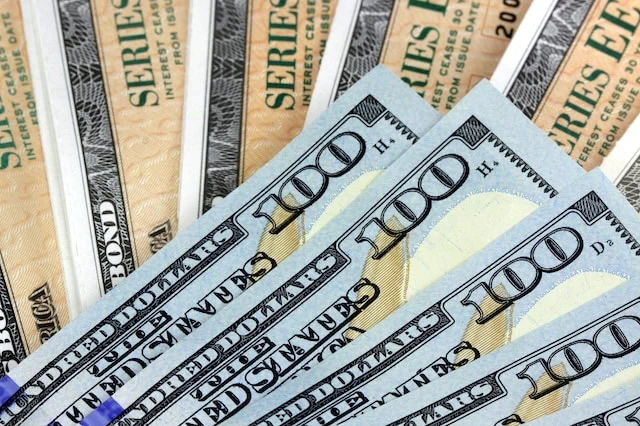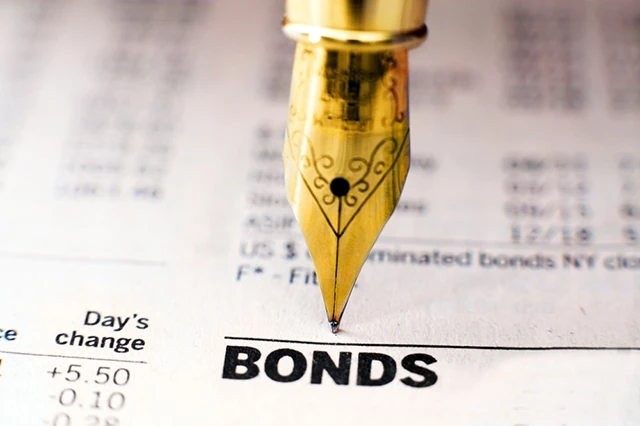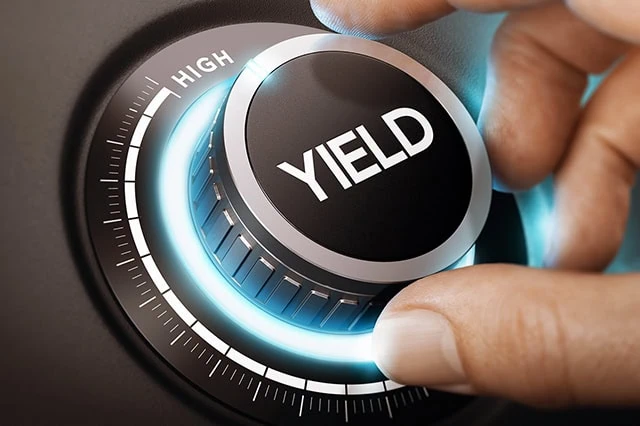The best bond funds do a lot of heavy lifting for everyday investors.
Bonds are portfolio staples that help investors achieve any number of goals—they provide a differentiated source of returns, deliver dependable income to retirees, and offer a measure of safety when the stock market isn’t cooperating.
Bond funds make it much easier to own bonds. They’re a source of instant diversification, holding hundreds if not thousands of bonds that you can purchase with a single click in your brokerage or retirement account. They give bond exposure to investors whose brokers don’t allow them to purchase individual debt issues. And they let managers or a rules-based index do the work for you, saving you from countless hours of research that you might not have the time or appropriate skills to conduct.
And the best bond funds? Well, exactly what one prizes in their fund holdings will vary from person to person. But generally speaking, these products will deliver superior strategies at a lower cost than their peers, and allow individual investors to buy in for a reasonable amount of money.
Let me introduce you to some of the best bond funds you can buy. Each of these funds captures a different slice of the bond market, so while you might not have a need for every product listed, there’s almost certain to be at least one fund that addresses your particular goals.
Disclaimer: This article does not constitute individualized investment advice. Securities, funds, and/or other investments appear for your consideration and not as personalized investment recommendations. Act at your own discretion.
Why Invest in Bonds?

When you purchase a bond, you’re purchasing debt issued by some sort of entity—maybe it’s a national government, maybe it’s a local municipality, maybe it’s a business—that they use to finance projects, equipment, and more. When you hold a bond, that entity is promising to eventually pay back your initial investment with interest, and that interest usually is paid out every six months.
Bonds largely trade in a range around their “par value,” which is how much their issuer has promised to pay back. (Basically, the initial price of the investment.) So while people generally invest in stocks for growth, they tend to invest in bonds for their income and relative stability.
“For investors with shorter time horizons (two years or less), bonds are typically a good place to invest to earn a conservative yield and protect principal,” says Paul Camhi, Vice President at investment firm The Wealth Alliance. “For instance, if you are saving money to buy your first home, keeping your money invested in short-term, high-quality bonds is a safe way to earn income on your cash.”
Also, investors typically want to invest more in bonds the closer they are to retirement, as their focus shifts from growing their wealth to protecting it.
“If you expect to retire in 30 years or more, you might target as little as 10% in bonds,” Camhi says. “When you are 20 years out, you might increase that to 20%. At 10 years away from retirement, the allocation to bonds might be closer to 30%.”
And in a few cases, certain types of bonds offer tax advantages. Interest on municipal bonds, for instance, isn’t subject to federal taxes, and in some cases, it’s even exempt from state and local taxes. And U.S. Treasury income, while taxable at the federal level, gets a pass from state and local levies.
Do you want to get serious about saving and planning for retirement? Sign up for Retire With Riley, Young and the Invested’s free retirement planning newsletter.
How Did We Choose These Bond Funds?

Bond funds are a mind-blowingly big business, at more than $5 trillion in assets under management, according to the Investment Company Institute (ICI).
That money is spread across nearly 2,000 mutual funds, many of which have a variety of share classes with different expenses, sales charges, and investment minimums, so … suffice to say that if you had to start your search with a universe of “all bond funds,” you’d suffer analysis paralysis pretty quickly.
This list is meant to take some of the bricks off your shoulders.
I’ve narrowed that universe down to a handful of the best bond mutual funds by filtering for a number of qualities that should benefit the average investor. Specifically, all of the funds on this list meet the following criteria:
- Morningstar Gold Medalist rating: Morningstar has two ratings systems—the Star ratings and the Medalist ratings. The latter are a forward-looking analytical view of a fund. Per Morningstar: “For actively managed funds, the top three ratings of Gold, Silver, and Bronze all indicate that our analysts expect the rated investment vehicle to produce positive alpha relative to its Morningstar Category index over the long term, meaning a period of at least five years. For passive strategies, the same ratings indicate that we expect the fund to deliver alpha relative to its Morningstar Category index that is above the lesser of the category median or zero over the long term.”
- No loads/sales charges: In addition to annual expenses, some funds charge additional fees, including “loads.” For instance, if you invested $10,000 in a mutual fund with a 5% front-end load, the mutual fund provider would immediately take $500 out in fees. So, you’d already be starting behind the 8-ball, investing just $9,500 to start with. The funds here have no sales charges.
- Low fees: The fund must have an annual expense ratio considered “Low” by Morningstar, which means its fees are in the bottom quintile (the lowest 20%) of funds within its category.
- Reasonable investment minimums: The maximum investment minimum for inclusion is $5,000. But only one fund on this list requires that much to start. Most require between $1,000 and $2,500, and a few funds have zero investment minimums. Also, some fund providers explicitly lay out lower investment minimums for specific accounts, such as individual retirement accounts (IRAs). T. Rowe Price, for instance, has $2,500 minimum initial investments on many of its funds, but lowers that minimum to $1,000 when investing through an IRA.
- Broad availability: Many mutual funds have several share classes, many of which are limited to certain types of accounts, like, say, only for 401(k)s or only for wealth management clients. All funds here are Investor-class or other shares that are generally considered to be widely available to retail investors.
From the much more manageable resulting list, I’ve selected a group of bond mutual funds that cover most of the core fixed-income strategies that investors commonly seek out. This should ensure that there’s at least one bond fund, if not many, for just about anyone reading this.
Editor’s note: Mutual funds selected for 2025 all had Gold Medalist ratings as of the beginning of the year. Funds will remain on the list throughout 2025 as long as they maintain a Medalist rating of at least Silver. Funds that fall below that threshold will be replaced.
The Best Bond Funds You Can Buy

I have a few final considerations for you to keep in mind as you read this list:
- All of these funds have no loads, but brokerage commission fees might apply; check your brokerage before purchasing.
- Your brokerage might require a larger minimum initial investment for mutual funds than the fund itself requires. And some brokerage accounts might not let you purchase certain funds, even if they’re generally available to retail investors. (For instance, you might be able to buy the completely made-up Woodley Investments Corporate Bond Fund at Schwab, but not at Fidelity.)
- Lastly, this isn’t a ranking of the best bond funds. Every fund on here rates as excellent already. Instead, I’ve ordered this list by starting with the most broad-based bond categories, then making my way into more specific strategies.
With all that out of the way, let’s look at the best bond funds you can buy.
1. Fidelity U.S. Bond Index Fund

- Style: Intermediate-term core bond
- Assets under management: $67.5 billion*
- SEC yield: 4.1%**
- Expense ratio: 0.025%, or 25¢ per year for every $1,000 invested
- Minimum initial investment: None
One of the core bond strategies you’ll come across is … well, “core bond.” Core bond funds will be invested mostly in investment-grade U.S. bonds, which usually include Treasuries, corporates, and securitized debt, such as mortgage-backed securities (MBSes). However, they’re allowed to have a little (read: up to 5%) exposure in below-investment-grade bonds, aka junk.
The Fidelity U.S. Bond Index Fund (FXNAX) is an intermediate-term core bond fund, which in Morningstar parlance means one of two things:
- Portfolio duration is 3.5 to six years. Duration is a measure of interest-rate sensitivity. A duration of 3.5 years implies that for every 1-percentage-point rise in interest rates, the fund would experience a short-term decline of 3.5%, and vice versa. The actual calculation is more complex; this is just a simplification that helps investors understand the greater the duration, the greater the risk.
- Average effective maturity of the portfolio is four to 10 years. Morningstar only uses this if duration is not available.
In return for this medium interest-rate risk, intermediate-term bond portfolios tend to deliver middle-of-the-road yields.
FXNAX tries to replicate the Bloomberg U.S. Aggregate Bond Index, aka “the Agg.” This is arguably the king of bond indexes; hundreds of billions of dollars are invested in funds that track this benchmark.
The resulting portfolio is exactly what you’d expect out of a core bond fund: Heavy exposure to U.S. Treasuries (45%), corporate bonds (25%), and MBSes (25%), with sprinklings of other debt, including U.S. agency debt, commercial MBSes (CMBSes), and asset-backed securities (ABSes). Duration is at the long end of the intermediate-term spectrum, at 5.9 years (so for every 1-point rise in market interest rates, FXNAX would be expected to decline 5.9%, and vice versa), and often hovers around the six-year mark.
Why is Fidelity U.S. Bond Index among the market’s best bond funds? In addition to tracking a generally well-regarded bond index, FXNAX charges a paper-thin 0.025% in annual expenses and has no minimum initial investment. In other words: It’s one of the most accessible core bond funds you’ll find.
* Assets under management for all funds on this list reflect all share classes.
** SEC yield reflects the interest earned across the most recent 30-day period. This is a standard measure for funds holding bonds and preferred stocks.
Want to learn more about FXNAX? Check out the Fidelity provider site.
Related: 7 Best Fidelity Retirement Funds [Low-Cost + Long-Term]
2. Bridge Builder Core Plus Bond Fund

- Style: Intermediate-term core-plus bond
- Assets under management: $44.2 billion
- SEC yield: 4.2%
- Expense ratio: 0.12%*, or $1.20 per year for every $1,000 invested
- Minimum initial investment: None
Another broad-based strategy is “core-plus bond,” which as the term would imply, is “core bond” with some funk rubbed all over it. Core-plus bond funds will still be focused on investment-grade U.S. debt, but they’ll have more leeway to hold corporate junk, as well as emerging-markets debt, bank loans, debt denominated in foreign currencies, and a host of other bonds.
Bridge Builder might not have the same name cachet as other fund providers on this list, such as Vanguard and Fidelity—indeed, roughly $200 billion in AUM across its dozen or so mutual funds is a pittance compared to those names. But it has a gem in Bridge Builder Core Plus Bond Fund (BBCPX), which is the only intermediate-term core-plus bond fund to meet my criteria.
As of the most recent read, BBCPX’s largest allocation was to MBSes (30%), followed by big chunks of government-related bonds (28%), corporate issues (28%), and ABSes (10%). It also owned slivers of bank loans, U.K. government bonds, convertible securities, and more. And despite having the flexibility of investing more in junk than a regular core bond strategy, less than 1% of BBCPX’s portfolio was rated below investment-grade.
The fund celebrated its 10th birthday this summer, opening up 10-year performance data in Morningstar. Like with all other meaningful timeframes, Bridge Builder Core Plus Bond has beaten both its category and Morningstar’s performance benchmark index, and sits in the top 25% or so of category funds.
Despite employing numerous managers across four different sub-advisers—BlackRock, Pimco, Metropolitan West and Loomis, Sayles—it’s able to offer an extremely low 0.12% expense ratio.
* 0.34% gross expense ratio is reduced with a 22-basis-point fee waiver through at least Oct. 28, 2026.
Want to learn more about BBCPX? Check out the Bridge Builder provider site.
Related: The 13 Best Mutual Funds You Can Buy
3. Fidelity Short-Term Treasury Bond Index Fund

- Style: Short-term government bond
- Assets under management: $3.3 billion
- SEC yield: 3.6%
- Expense ratio: 0.03%, or 30¢ per year for every $1,000 invested
- Minimum initial investment: None
What if you, as an investor, want to prioritize safety over yield?
Well, one way to ratchet down your risk is to invest in extremely high-quality bonds. In general, the higher an issuer’s credit quality, the higher the implied likelihood that an investor will get their full interest and principal … and as a result, the less yield an issuer must offer to draw interest in their bonds. And not much beats U.S. Treasuries, which are among the best-rated bonds on the planet.
Another way to lower risk is to own bonds with shorter maturities. Let’s say you’re choosing between two bonds from the same issuer: Bond A, which matures in two years, and Bond B, which matures in 20 years. Everything else being equal, you’d probably feel safer with Bond A, given that a lot could happen in the additional 18 years Bond B needs to mature!
Interest rates matter, too. When rates go higher, new bonds pay more, which tempt people to sell their old bonds for the new, higher-paying bonds. But the temptation is much greater when you’re dealing with longer-term bonds with lots of payments remaining—and not so great for short-term bonds with one or just a couple payments left.
In short: The longer the maturity, the more risk a bond buyer assumes. That’s why longer-term bonds tend to offer higher yields than shorter-term bonds.
The Fidelity Short-Term Treasury Bond Index Fund (FUMBX), then, is a perfect product for investors who want to earn some money on their investment but don’t want to take on a lot of risk. FUMBX holds a tight grouping of about 115 Treasury bond issues whose maturities span a few months to five years. That’s a bit longer-term than some other Treasury funds that limit their maturities to three years. But it still results in a portfolio average maturity of under three years, which is plenty short. Duration, meanwhile, is a scant 2.5 years, which means FUMBX would fall just 2.5% in response to a 1-percentage-point hike in interest rates. Conversely, it would only rise that much on a similar decline in rates.
Still, right now, this relatively safe portfolio yields well more than 3%, and that income is exempt from state and local taxes. So if you want portfolio protection that can still generate some income, FUMBX is one of the best bond funds you can buy.
Want to learn more about FUMBX? Check out the Fidelity provider site.
Make Young and the Invested your preferred news source on Google
Simply go to your preferences page and select the ✓ box for Young and the Invested. Once you’ve made this update, you’ll see Young and the Invested show up more often in Google’s “Top Stories” feed, as well as in a dedicated “From Your Sources” section on Google’s search results page.
Related: 7 Best Fidelity ETFs for 2025 [Invest Tactically]
4. Vanguard Intermediate-Term Corporate Bond Index Fund Admiral Shares

- Style: Corporate bond
- Assets under management: $59.5 billion
- SEC yield: 4.8%
- Expense ratio: 0.06%, or 60¢ per year for every $1,000 invested
- Minimum initial investment: $3,000
A little further up the risk/reward scale are intermediate-term corporate bonds.
A quick tip on bond-fund terminology. Unless you see words like “high yield” or “junk” attached to the type of debt, it’s a good assumption that the fund focuses only on investment-grade bonds in that class, not below-investment-grade. Example: It would be fair to assume that the completely fictional Woodley Wealth Corporate Bond Fund (WWCBX) primarily holds investment-grade corporates, and that the equally fictional Woodley Wealth Junk Debt Fund (WWJDX) invests primarily in below-investment-grade bonds.
But you’ll always want to look under the hood, just to be sure.
Anyways, investment-grade corporates are typically lower-rated than Treasuries or other federal agency debt, so you’re taking on a little more risk, but you typically get more yield in return. Similarly, stepping up from short-term bonds to intermediate-term bonds means you’re taking on more rate and default risk, but again, you’re usually compensated for that.
Put those two things together, and what do you get?
The Vanguard Intermediate-Term Corporate Bond Index Fund Admiral Shares (VICSX) is one of the best ways to invest in this kind of debt. VICSX holds more than 2,100 investment-grade corporate bonds with maturities of between five and 10 years. You’ll see debt from all sorts of recognizable names in here, including the likes of Wells Fargo (WFC), Bank of America (BAC), and Pfizer (PFE).
VICSX’s portfolio is split roughly 50/50 between BBB-rated bonds (the lowest investment-grade rating) and A-rated or above. Meanwhile, the focus on intermediates provides a fair blend of risk and income. Duration (a measure of interest-rate risk) is 6.0 years, which implies that a 1-percentage-point increase in interest rates would lead to a 6.0% short-term decline in the fund, and vice versa. Meanwhile, you’re getting nearly 5% in yield on what is a pretty high-quality portfolio.
You can also get VICSX in ETF form: the Vanguard Intermediate-Term Corporate Bond ETF (VCIT), which charges 0.03% annually.
Want to learn more about VICSX? Check out the Vanguard provider site.
Related: 10 Monthly Dividend Stocks for Frequent, Regular Income
5. Fidelity Short Duration High Income Fund

- Style: High-yield bond
- Assets under management: $293.4 million
- SEC yield: 6.3%
- Expense ratio: 0.73%, or $7.30 per year for every $1,000 invested
- Minimum initial investment: None
Despite earning the nickname “junk,” below-investment-grade bonds aren’t nuclear. They simply have a comparatively higher risk of default—but you’ll usually be compensated with a more generous yield by taking on that higher risk. Also, not all junk is created equally—below-investment-grade is made up of several tiers, for one, and junk bonds come in varying maturities.
Sadly, there are exceedingly few highly rated junk-bond mutual funds, and currently, none that fit all of my criteria above. Indeed, our previous pick—GMO High Yield I Shares (GMOZX)—was downgraded from Gold to Bronze after Morningstar lowered its “People Pillar” rating (to Above Average, but still).
The “next man up,” then, is Fidelity Short Duration High Income Fund (FSAHX), a Silver-rated high-yield bond fund with a somewhat different bent.
Co-managers Benjamin Harrison and Jared Beckerman oversee a 390-bond portfolio of corporate debt. It’s most heavily concentrated in issues rated B (junk, at 45% of assets) and BB (also junk, but the highest rating within junk, at 35%), with the rest scattered among CCC-or-worse, a little investment-grade debt, and a few issues that don’t have ratings from the major agencies. It’s highly diversified by sector, and it does have about 15% of assets allocated to international debt (primarily through Canada and the U.K.).
Where Fidelity Short Duration High Income differs from the typical high-yield fund is its focus on maintaining an average duration of three years or less—currently, that number sits at just 1.7 years, which implies that a 1-point increase in market interest rates would set FSAHX back by a modest 1.7%. Unsurprisingly, this fund has been much less volatile than normal high-yield funds, yet it’s still able to dole out a very high level of income (6%-plus currently).
Big income and stability? That might sound like a match made in heaven to some readers, but remember: Many investors like junk bonds not just because of their high yield, but also their relatively high potential for capital appreciation compared with other, safer bonds. However, Fidelity Short Duration High Income’s focus on short duration significantly caps that upside—and as a result, FSAHX has actually underperformed its category average and index over most time frames.
Put differently? FSAHX is best suited for investors who simply want a greater level of fixed income than traditionally more conservative bond funds provide, but without significantly ratcheting up risk.
Want to learn more about FSAHX? Check out the Fidelity provider site.
Do you want to get serious about saving and planning for retirement? Sign up for Retire With Riley, Young and the Invested’s free retirement planning newsletter.
6. Vanguard Massachusetts Tax-Exempt Fund

- Style: Municipal bond
- Assets under management: $3.2 billion
- SEC yield: 3.7%
- Expense ratio: 0.09%, or 90¢ per year for every $1,000 invested
- Minimum initial investment: $3,000
Municipal bonds are typically issued by states, counties, cities, and other sub-federal government agencies. They’re sometimes used to fund general obligations and are backed by the municipality, though some are backed by the revenue a project would generate—say, a toll road. Muni bonds’ quality usually isn’t as high as similar federal debt but higher than comparable corporates.
But the glitziest trait of “munibonds” is their tax treatment. Municipal bonds’ interest is exempt from federal income taxes and net investment income tax (NIIT) … and if you live in the municipality in which it was issued, state and possibly even local income taxes. So whatever headline yield you see on a municipal bond, you’re probably earning much more once you factor in taxes.
Here’s a hypothetical example: You live in Maryland and make $275,000 per year. In 2025, that puts you in the 35% federal tax bracket and the 5.75% Maryland state tax bracket, plus it requires you to pay an additional 3.8% in NIIT, for a total tax rate of 44.55%. You buy a Maryland municipal bond with a 3% yield, so your income isn’t subject to any of those taxes. Your “tax-equivalent yield” would be 5.4%. That means if you wanted to buy a normal taxable bond and get the same amount of post-tax yield as the muni, that bond would have to yield 5.4%!
A single muni-bond fund met my criteria: the Vanguard Massachusetts Tax-Exempt Fund (VMATX). This fund, which yields 4.1% right now, holds nearly 900 Massachusetts munibonds, and it does so for a song—just 9 basis points annually. (A basis point is one one-hundredth of a percentage point.)
You do not have to live in Massachusetts to invest in this fund. If you’re a resident of another state, you could still buy VMATX and enjoy interest income free of federal taxes and NIITs, which would be up to 40.8% if you’re in the highest tax bracket. But obviously, Massachusetts residents get the maximum benefit from this fund, as they also get to back out their 5% state income tax (and the 4% surcharge for really high earners). In fact, Massachusetts residents paying the highest rates would need a whopping 7.4% from a taxable bond fund to break even with VMATX on a tax-equivalent basis.
Want to learn more about VMATX? Check out the Vanguard provider site.
Related: The 7 Best Gold ETFs You Can Buy
7. Vanguard Emerging Markets Government Bond Index Fund Admiral Shares

- Style: Emerging markets bond
- Assets under management: $5.8 billion
- SEC yield: 5.6%
- Expense ratio: 0.20%, or $2.00 per year for every $1,000 invested
- Minimum initial investment: $3,000
Every bond fund up until now has been focused on U.S. markets. But you absolutely can (and some advisors would say you should) have a little exposure to international bonds.
Vanguard Emerging Markets Government Bond Index Fund Admiral Shares (VGAVX), for instance, allows you to invest in the sovereign debt of emerging markets. There is no hard definition for an “emerging market” (EM), but it’s generally considered to be a nation with a faster-growing economy and a developing middle class that may also entail some risks, such as less regulated markets and political instability, compared to “developed markets.”
A little context to give you a mental picture: the U.S., western Europe, Japan, and Australia are considered developed markets. India, Brazil, and Poland are considered emerging markets.
Emerging markets bonds typically entail more risk, which is often rewarded with higher yields. They provide a source of diversification, which can be helpful when U.S. bonds aren’t as productive. And they provide some exposure to the growth of these developing nations.
Vanguard’s EM government bond fund invests in a little more than 830 sovereign debt issues in more than 60 nations, with Saudi Arabia, Mexico, and Türkiye among the highest-represented countries at the moment. Credit quality isn’t spectacular, but it’s not nightmare fuel, either. Nearly 60% of assets is allocated to investment-grade bonds, while around 25% is in BB junk debt. That leaves only 15% of assets are invested in bonds rated B or worse.
In return, you get a yield well north of 5%, and you’re paying a mere 20 basis points annually to get it. That easily puts VGAVX among some of the best bond funds you can buy.
Want to learn more about VGAVX? Check out the Vanguard provider site.
Related: How to Get Free Stocks for Signing Up: 10 Apps w/Free Shares
8. T. Rowe Price Dynamic Credit Fund

- Style: Nontraditional bond
- Assets under management: $1.2 billion
- SEC yield: 6.9%
- Expense ratio: 0.63%*, or $6.30 per year for every $1,000 invested
- Minimum initial investment: $2,500
Many bond products must stay within certain parameters—they can only hold these kinds of bonds, they have to have this percentage of investment-grade bonds, maturities must be at least this long. But nontraditional bond funds’ restraints are typically few and far between, with managers given not just a long leash on the types of bonds they can carry, but sometimes also permission to use derivatives.
Or as Morningstar beautifully puts it, “nontraditional bond funds are like the grade-school kids that liked to color outside the lines.”
But freedom doesn’t necessarily mean every nontraditional bond fund will be full of exotic holdings. T. Rowe Price Dynamic Credit Fund (RPIDX), for instance, is currently about 55% invested in corporate bonds, 16% in collateralized debt, and 10% in government bonds. It also has a little bit of corporate junk (5%) and a high (11%) amount of cash reserves, and the rest is scattered across varied debt types. This is also very much a “global” fund, as about a third of the portfolio is ex-U.S. in nature; nothing too out of the ordinary.
That said, managers Kenneth Orchard and Steeve Boothe have a fairly aggressive portfolio right now. The majority of holdings (60%) are junk-rated, and about half of that is B or worse. Only 20% of the portfolio is investment-grade. The remainder (that isn’t cash reserves) is “not rated,” which simply means they’re not rated by Moody’s or Standard & Poor’s—it doesn’t imply anything about quality one way or another. Investors with the stomach for it are earning almost 7% for their trouble, though.
RPIDX hit the markets in January 2019, so it’s not a terribly old fund. But so far, so good. It has beaten the category and Morningstar’s performance benchmark index over every meaningful time period, and its returns are within the top 15% of nontraditional bond funds over the trailing-five-year period.
* 0.84% gross expense ratio is reduced with a 21-basis-point fee waiver through at least Feb. 28, 2027.
Want to learn more about RPIDX? Check out the T. Rowe Price provider site.
Want to talk more about your financial goals or concerns? Our services include comprehensive financial planning, investment management, estate planning, taxes, and more! Schedule a call with Riley to discuss what you need, and what we can do for you.





![8 Best Portfolio Analysis Tools [Portfolio Analyzer Options] 27 best portfolio analysis tools](https://youngandtheinvested.com/wp-content/uploads/best-portfolio-analysis-tools-600x403.jpg.webp)
